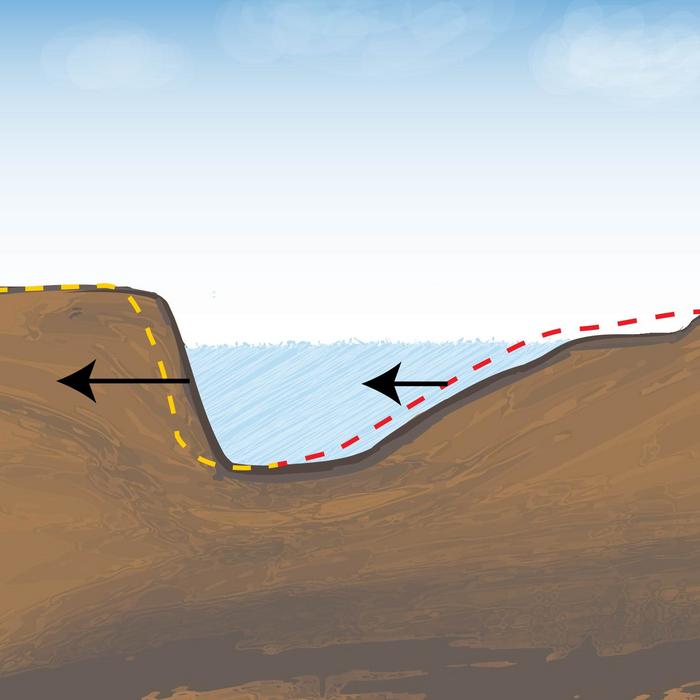Evolution-capable AI promotes green hydrogen production using more abundant chemical elements
1. A NIMS research team has developed an AI technique capable of expediting the identification of materials with desirable characteristics. Using this technique, the team was able to discover high-performance water electrolyzer electrode materials free of platinum-group elements—substances previously thought to be indispensable in water electrolysis. These materials may be used to reduce the cost […]

1. A NIMS research team has developed an AI technique capable of expediting the identification of materials with desirable characteristics. Using this technique, the team was able to discover high-performance water electrolyzer electrode materials free of platinum-group elements—substances previously thought to be indispensable in water electrolysis. These materials may be used to reduce the cost of large-scale production of green hydrogen—a next-generation energy source.

Credit: Ken Sakaushi
National Institute for Materials Science
1. A NIMS research team has developed an AI technique capable of expediting the identification of materials with desirable characteristics. Using this technique, the team was able to discover high-performance water electrolyzer electrode materials free of platinum-group elements—substances previously thought to be indispensable in water electrolysis. These materials may be used to reduce the cost of large-scale production of green hydrogen—a next-generation energy source.
2. Large-scale production of green hydrogen using water electrolyzers is a viable means of achieving carbon neutrality. Currently available water electrolyzers rely on expensive, scarce platinum-group elements as their main electrocatalyst components to accelerate the slow oxygen evolution reaction (OER)—an electrolytic water reaction that can produce hydrogen. To address this issue, research is underway to develop platinum-group-free, cheaper OER electrocatalysts composed of relatively abundant chemical elements compatible with large-scale green hydrogen production. However, identifying the optimum chemical compositions of such electrocatalysts from an infinitely large number of possible combinations had been found to be enormously costly, time-consuming and labor-intensive.
3. This NIMS research team recently developed an AI technique capable of accurately predicting the compositions of materials with desirable characteristics by switching prediction models depending on the sizes of the datasets available for analysis. Using this AI, the team was able to identify new, effective OER electrocatalytic materials from about 3,000 candidate materials in just a single month. For reference, manual, comprehensive evaluation of these 3,000 materials was estimated to take almost six years. These newly discovered electrocatalytic materials can be synthesized using only relatively cheap and abundant metallic elements: manganese (Mn), iron (Fe), nickel (Ni), zinc (Zn) and silver (Ag). Experiments found that under certain conditions, these electrocatalytic materials exhibit superior electrochemical properties to ruthenium (Ru) oxides—the existing electrocatalytic materials with the highest OER activity known. In Earth’s crust, Ag is the least abundant element among those constituting the newly discovered electrocatalytic materials. However, its crustal abundance is nearly 100 times that of Ru, indicating that these new electrocatalytic materials can be synthesized in sufficiently large amounts to enable hydrogen mass-production using water electrolyzers.
4. These results demonstrated that this AI technique could be used to expand the limits of human intelligence and dramatically accelerate the search for higher-performance materials. Using the technique, the team plans to expedite its efforts to develop new materials—mainly water electrolyzer electrode materials—in order to improve the efficiency of various electrochemical devices contributing to carbon neutrality.
***
5. This project was carried out by a NIMS research team led by Ken Sakaushi (Principal Researcher) and Ryo Tamura (Team Leader). This work was conducted in conjunction with another project entitled, “High throughput search for seawater electrolysis catalysts by combining automated experiments with data science” (grant number: JPMJMI21EA) under the JST-Mirai Program mission area, “low carbon society.”
6. This research was published in ACS Central Science, an open access journal of the American Chemical Society, as an “ASAP (as soon as publishable) article” at 8:00 am on November 30, 2023, EST (https://doi.org/10.1021/acscentsci.3c01009).
Journal
ACS Central Science
DOI
10.1021/acscentsci.3c01009
Method of Research
Experimental study
Subject of Research
Not applicable
Article Title
Human-Machine Collaboration for Accelerated Discovery of Promising Oxygen Evolution Electrocatalysts with On-Demand Elements
Article Publication Date
30-Nov-2023
What's Your Reaction?

































